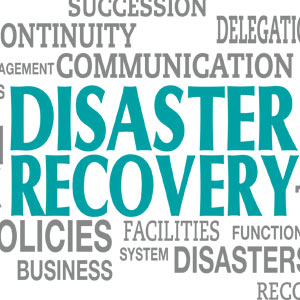DISASTER PLANNING AND THE IMPORTANCE OF A BUSINESS CONTINUITY PLAN

In 2017, the United States (and the world) has experienced a string of disasters that have displaced people and businesses with calamitous consequences. We have seen hurricanes, tornadoes, forest fires, and floods shut down companies for long periods of time. Thus, it is vital that every enterprise establish a plan to continue or restore operations in the face of catastrophe. In fact, many Fortune 500 companies require that any service provider have a business continuity plan (BCP) in place prior to entering into an agreement. Here is an overview of the components of a BCP to help businesses recover in the face of disaster.
Emergency Management Team
By proactively having a trained team in place that
will act as first responders in case disaster strikes, decisions
can then be centralized. An emergency management
team should be familiar with and ready to execute
the company’s BCP at all times, staffed with representatives
from all essential functional areas including
technology, operations, human resources, and finance.
The Plan
The intent of a BCP should be to allow for a fast and
efficient return to normal operations following a
disaster. A good plan should take into consideration
various levels of disruption, ranging from short-term
power failures to extensive damage following a
hurricane or earthquake. Most plans include a backup
or redundancy for various operations. Consider all
aspects of a company’s operations from the facilities, to
telecommunications, technology, employee outreach,
and customer service.
Order of Succession & Delegation of Authority
The plan should address order of succession and
delegation of authority. By establishing these transition
processes, a business can be better prepared for unavailable
personnel, with designated leadership ready
to step in. Training the designated leadership is ideal to
ensure a smooth transition in the face of disaster.
Alternate Facilities
The plan should identify alternate facilities to
continue the business should the normal business
facility become inaccessible for twenty-four hours or
more. For example, a technology company may locate
backup servers that are at least 100
miles away from the main servers.
It is generally recommended
that a few alternate
facilities be contemplated,
in the case the disruption
affects a larger geographic
region and damages an
alternate facility. Some
businesses institute a virtual
office, allowing staff to work
remotely.
Records & Documentation
Records management is vital; documentation necessary
to execute business processes should be backed
up. It is highly recommended that the records be backed
up off site periodically. Many companies use cloud
storage to support backup and remote recovery, as well
as allowing staff to work remotely.
Communication with Employees
Perhaps most important is a system to update
staff on the disaster and provide timely instructions.
A contact list should be maintained and circulated
regularly. This allows management to communicate
staffing, scheduling, and other duties during each
phase of the disaster plan.
Training
BCPs should address all these issues long before
disaster strikes. A schedule for training employees and
testing the BCP should be instituted. By revisiting the
BCP on a regular basis, a business can identify areas of
improvement, outdated contact information, or other
issues that may arise during execution of the plan.
Recovery to Normal
Finally, a business should have an executable plan
to recover from the disaster and transition back to normal
business operations after the disaster has passed.
This final element of the plan should address phasing
out the alternative facilities, returning personnel to
original responsibilities, and carrying over records and
equipment to the permanent facility.

Business Insights is hosted by the Law Firm of KPPB Law (www.kppblaw.com).
Sonjui L. Kumar is a founding partner of KPPB Law, practicing in the area of corporate law and governance. Jesse C. Moore is a law clerk at KPPB Law.
Disclaimer: This article is for general information purposes only, and does not constitute legal, tax, or other professional advice.
Enjoyed reading Khabar magazine? Subscribe to Khabar and get a full digital copy of this Indian-American community magazine.
blog comments powered by Disqus










